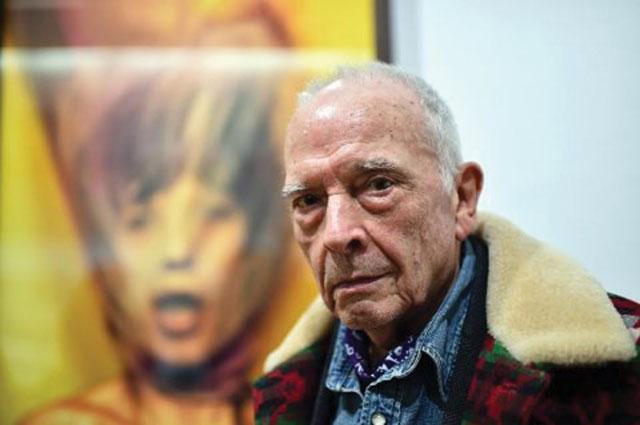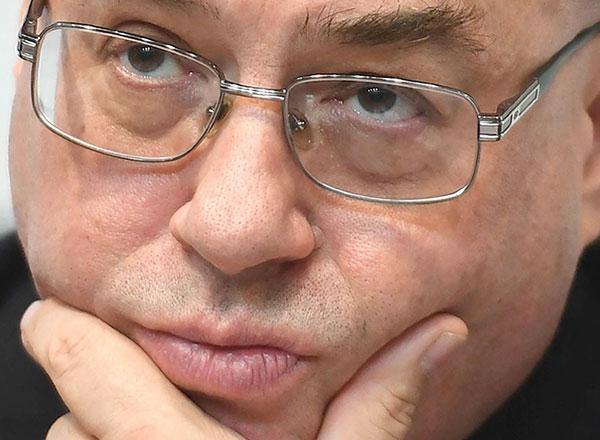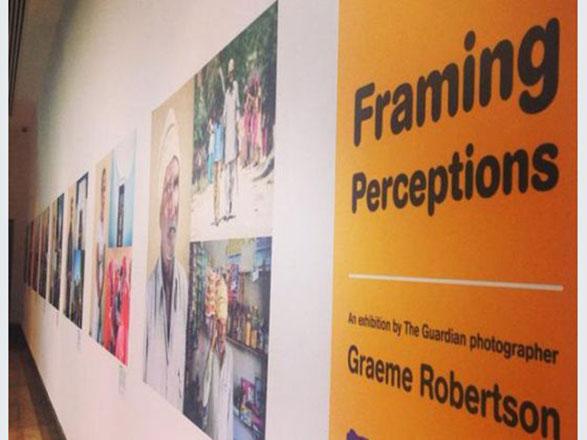You are here
Getting lucky — David Bailey, photographer to the stars
By AFP - Mar 04,2015 - Last updated at Mar 04,2015

MILAN — He may be a Swinging Sixties icon, but British photographer David Bailey up close is a wise-cracking crank who shrugs off his immense success as one of the world’s most famous celebrity photographers.
“I’m not proud, I don’t do proud,” he told AFP at the press opening of his Stardust exhibition, which is coming to Milan from March to June after a run at the National Portrait Gallery in London.
Intimate portraits of stars such as Kate Moss, Jack Nicholson and Mick Jagger gaze down from the walls of the Padiglione D’arte Contemporanea, alongside photographs of his fourth wife, model Catherine Dyer and children.
A section dedicated to naked unknowns who posed for his “Democracy” project between 2001 and 2005 follows a series capturing the 1960s in the East End of London, where he was raised by his father, a tailor’s cutter, and machinist mother.
“...What a lot of work”, Bailey says of the exhibition, but he won’t be drawn further, however, fobbing off questions with his characteristic bluntness: “it’s just my job, it’s what I do.”
The 77-year old famously suffered from dyslexia at school and truanted regularly before dropping out entirely, practically illiterate, aged 15.
“I didn’t know I was dyslexic until I was 30, I thought I was an idiot until then,” he says.
Bailey ended up selling suits and credits his interest in photography to a 1948 image by Henri Cartier-Bresson of Muslim women wearing long cloaks in front of the Himalayas, a shot which he said made the women appear to be mountains themselves.
He crossed paths with the East End underworld including the notorious Kray brothers, who ran a protection racket and carried out a series of murders and robberies in the 1950s and 60s — and whose photographs he took in 1965.
‘No regrets’
He says he was beaten up several times during his life and found out a few years ago that the Krays, who he spent a couple of weeks with during the shoot, had knifed his father.
But he does not regret the time spent with the gangsters, or anything at all for that matter — not even his three divorces.
“I have no regrets, and there’s no nostalgia in my life,” he said.
“That was the time I was living through. I live in the moment and always see the ridiculous side of life,” he adds, quipping: “you’ve got to seize the moment. See that moment? It’s just gone!”
Bailey has been known to take portrait photographs on smartphones but is somewhat dismissive about the digital medium compared with old-fashioned film.
“Yeah I’ve used phones, the phone is just another machine, a tool. It’s not the camera that takes photos, the person does.
“I prefer film though, there’s no magic with digital, you cannot make mistakes — and if you do you delete them immediately. There’s no mystery.”
Despite signing the odd autograph, he doesn’t appear comfortable with fans, turning his back on his photographs and insisting his life “is a lot bigger than this. I make bronzes, movies, paintings too”.
But what was it like living through the Swinging Sixties as someone as famous as the stars he was photographing, working with the Beatles and the Rolling Stones and becoming a sex symbol of sorts in his own right?
He shrugs, saying: “It wasn’t very swinging if you were a coal miner or a steel worker,” and no, on the sidelines of Milan fashion week, he won’t be drawn on models he would like to photograph today either. “I don’t know any models and don’t like actresses,” he said.
Wrapped up in a red coat with sheepskin ruff and with bags under his eyes, Bailey, whose career inspired Michelangelo Antonioni’s film “Blow-Up, has a simple answer when asked how he went from dyslexic drop-out to Vogue collaborator, the start of his stellar rise to fame.
“I worked hard. The harder you work, the luckier you get,” he said.
Related Articles
OCCUPIED JERUSALEM — Leading Bedouin scholar Clinton Bailey has amassed hundreds of hours of recordings about the nomadic society’s poetry,
LONDON — Andrew Bailey took over as governor of the Bank of England last year, just as Covid hit Britain like a storm, sinking the economy t
LONDON — When photographer Graeme Robertson who has covered wars and famines met a boy in Uganda whose skin looked as if it was falling off



















